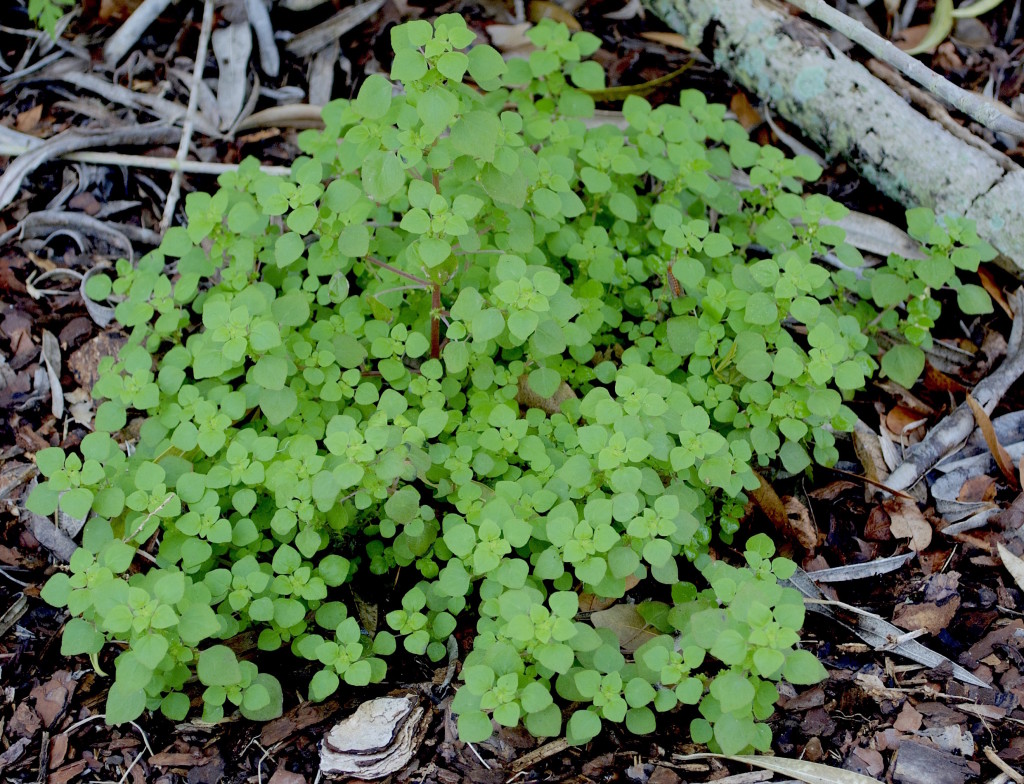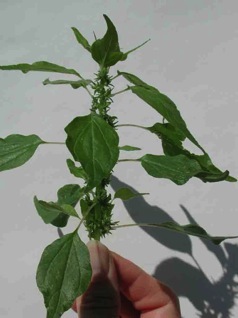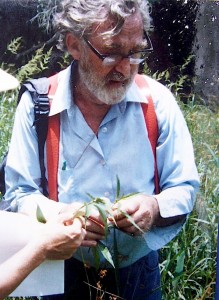Pellitory: Parietaria is a Whiz
Finding greens locally in the cooler months isn’t much of a challenge unless you’re looking for Pellitory . It likes to hide and move.
Pellitory, or Parietaria, is in the greater nettle family and likes it cool and dry, if not shady. It even grow on rocks up to 12,000 feet. Uncooked, pellitory has a hint of cucumber aroma, hence sometimes it’s called the Cucumber Weed. Cooked, it is bland, which suits some palates just fine because you can flavor it as you like. I have friends who just stuff it raw into tacos with other fixings.
Parietaria (pair-ee-eh-TAR-ee-uh) also known as Pellitory Over-the-Wall. It has a reputed split personality you should be aware of. Its purported double life may also explain why so many foraging books skip it. Many years ago I was told by foraging expert Richard “Dick” Deuerling (co-author of Florida’s Incredible Wild Edibles) that half the people who ate pellitory got the itches — like a niacin flush but longer lasting. I don’t get an all-over itchy feeling when I eat Parieitaria so I don’t think about it, but, if a person has allergies they should approach Parietaria with caution. Frankly in the decades since hence I have met only one person who get the itches from eating it. However, Dick, below left, was a stickler for details and I could have easily just met a lot of folks who don’t react to it.
While there is a difference between eating a plant and breathing its pollen, in the Mediterranean area pellitory, in particular Parietaria judaica, is becoming a significant problem. More than 82% of people who are allergic to pollen show an allergy to that particular Parietaria. Some Australian hospitals call the P. judaica the Asthma Weed and warn against it, labeling it dangerous. If you have allergies, or hay fever, Pellitory might be a plant to skip, or at least approach carefully.
That said, besides being an edible salad ingredient and pot herb for thousands of years, Parietaria has been used herbally, with a slight contradiction in constituents. Its attested main feature is that it is a diuretic of significant strength and good for kidney stones, bladder issues, et cetera. Yet, it is high in sodium which tends to make some folks retain water. On the other hand, Parietaria is high in potassium and nitrates, the latter of which a 2006 study showed helped lower blood pressure, which is often done by lowering ones fluids. Ben Johnson wrote centuries ago:
‘A good old woman . . . did cure me with sodden ale and pellitorie o’ the wall.’
The nutritional profile of a relative, P. diffusa, is per 100 grams fresh weight 155 calories, 5.4 grams of protein, 2.8 grams of carbohydrates, 0.6 grams fat and 5.2 grams fiber. As for minerals it has 883 mg of calcium, 585 mg sodium, 463 mg potassium, 200 mg magnesium, 80 mg phosphorus, 2.8 mg of iron, 1.2 mg zinc, 0.9 mg manganese, and 0.4 mg of copper.
There is also some debate if the plant as a treatment herb is more potent green or dried. There are arguments for both. Now, if you are still willing to try pellitory, know the complete plant also cleans glass and copper pots well. It’s botanical name, Parietaria, comes from the Latin word paries, meaning a wall. Of course, if you have been reading a lot of these articles you know by now that Latin is just a combination of stolen Etruscan and mangled Greek. “Paries” in Latin came from the Greek word “parifi” meaning edge. Parietaria likes to grow in the cracks of walls but it can also form large clumps, such as in my garden or under dry road bridges frequented by transients. The local species is Parietaria floridana.
Below is a recipe from the Italian book Piante Selvatiche by Roberto Gamacchio, which specializes in wild greenery.
Pasta with Parietaria
Ingredients:
Macaroni or spaghetti, 7 ounces dry
Parietaria 3.5 ounces
Béchamel sauce 2 ounces
salt
chilli
Cook the pasta “al dente”. Steam the Parietaria, salt and blend. Add the sauce and chilli to taste. Fold the sauce in the pasta, serve immediately, salt to taste
Green Deane’s “Itemized” Plant Profile
IDENTIFICATION: Six inches to a 14 inches tall in Florida, usually unbranched. Central stem is green, four-angled, it can be slightly hairy. The lanceolate leaves alternate. Each flower is surrounded by several green bracts that are longer than the flower. The flowers are green with no petals, four stamen. Grows in colonies. NO TEETH ON LEAVES. If you have a pellitory with teeth on the leaves you have misidentified an Acalypha, not edible.
TIME OF YEAR: Early winter in Florida, lasting just a few of months at best, December to around March, occasionally later in cool winters and very deep shade. Elsewhere usually during cool spring months.
ENVIRONMENT: Walls, fences, edges, cool dry areas, light shade, moist to slightly dry conditions.
METHOD OF PREPARATION: Edible raw or cooked. Try a small piece first, it may make some people who eat it raw itch for a while. Raw it is better chopped up in salads. HINT: Even when cooked the stems can be fibrous, so chopping or cutting them into bite-size length before cooking is recommended. The water pellitory is cooked in is considered by chefs to be excellent stock for making risotto.





